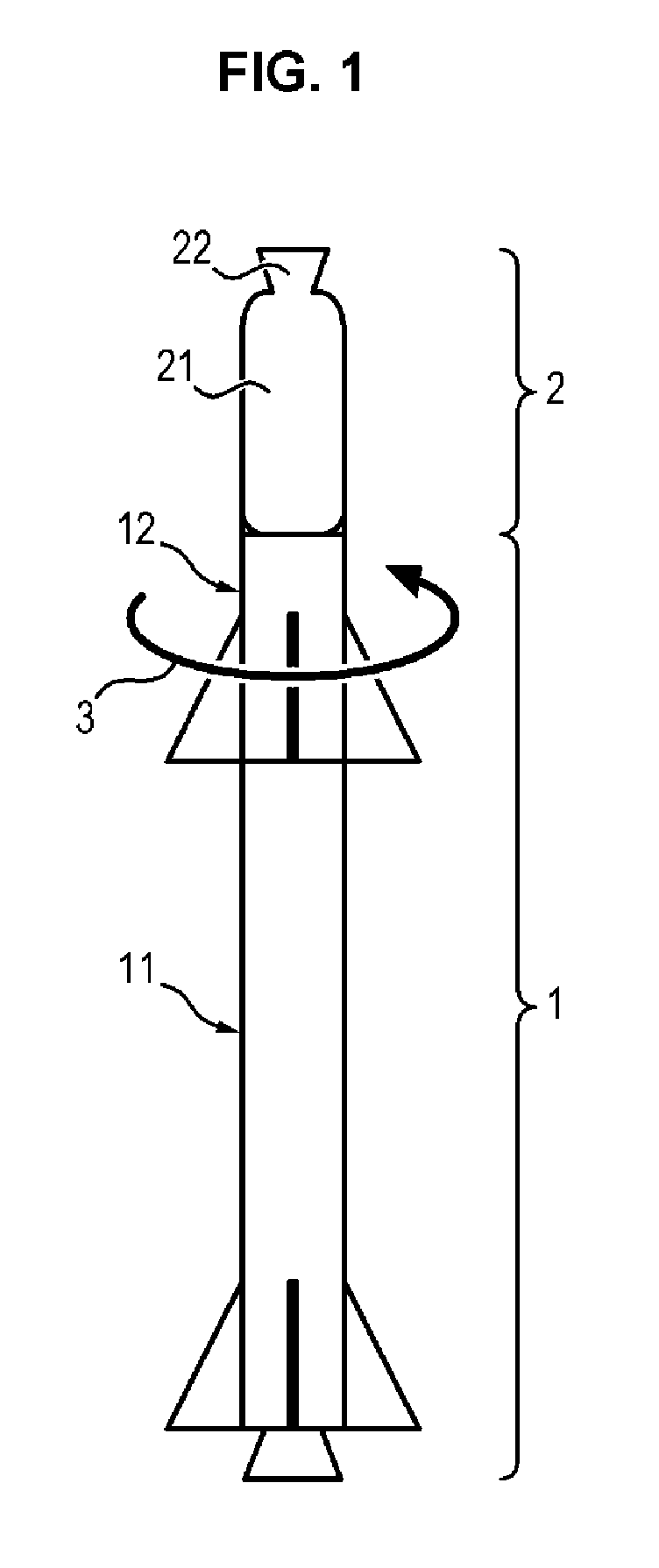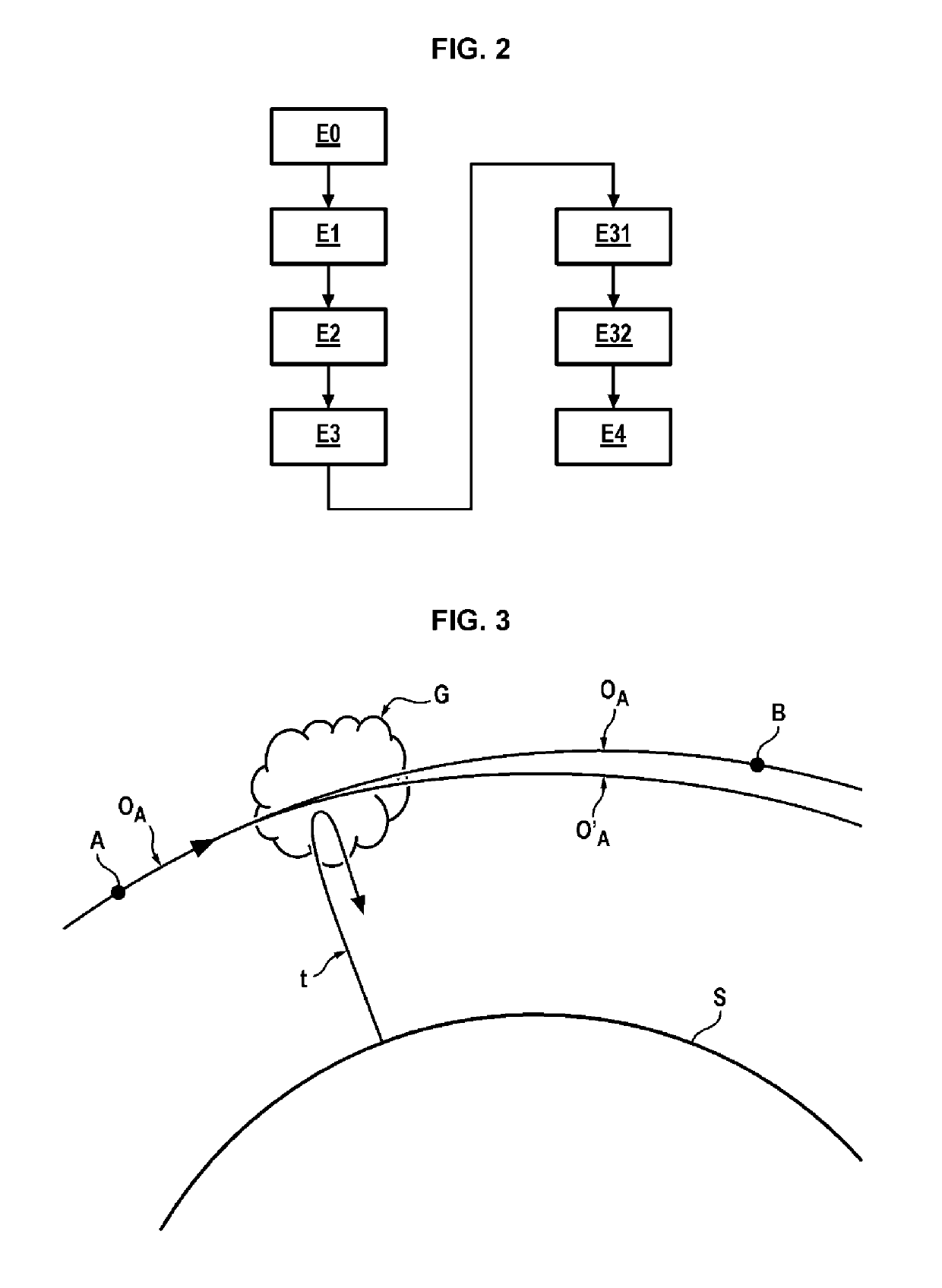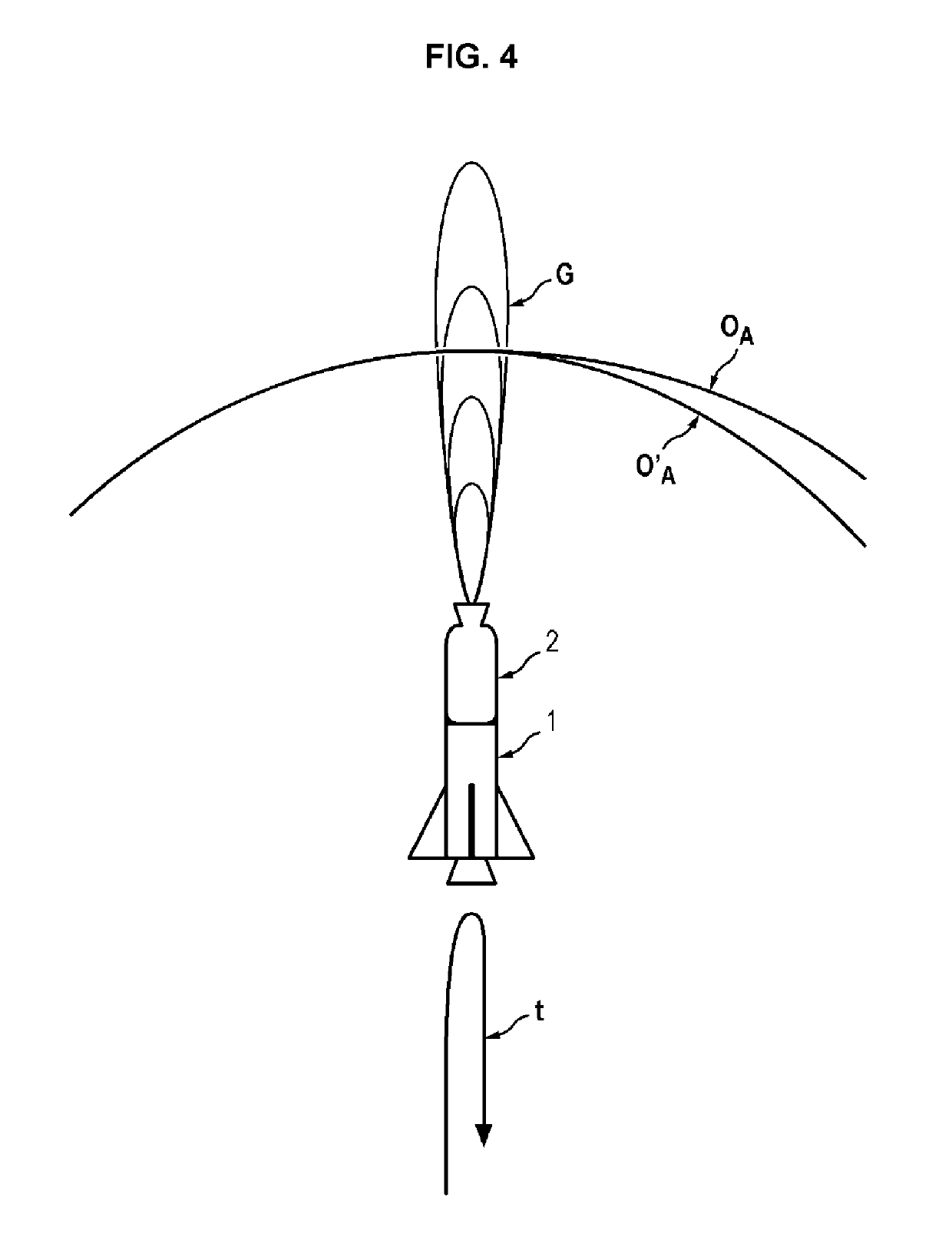Method and device for deflection of space debris
a technology of space debris and deflection device, which is applied in the field of space pollution, can solve the problems of affecting the function of active satellites, and affecting the stability of active satellites
- Summary
- Abstract
- Description
- Claims
- Application Information
AI Technical Summary
Benefits of technology
Problems solved by technology
Method used
Image
Examples
example of application
[0072]The most disturbing catalogued debris are on relatively high and sharply inclined orbits, typically between 700 and 1000 km in altitude, with an inclination greater than 80°. There are two debris in orbit at 850 km in altitude here, 98.6° in inclination. Relevant here is the most critical debris known to date, the 3rd stage of the Cosmos 3M launcher, of mass of 1.5 tons and a surface of around 12 m2.
[0073]There is also the probable average case of advance warning of 24 h, causing launching 12 hours prior to the collision as announced, i.e., 14 orbits.
[0074]If the aim was a change in altitude of perigee of 1 km for debris A, the decrement in speed ΔV to be supplied is 0.2569 m / s. But this also causes a change in period of the debris, decreasing by 0.6346 s. This decrease in period, integrated over 14.13 orbits, means that debris A will pass 14.13×0.6346=8.96 s before debris B at the predicted site of their collision. At the orbital speed of 7426.014 m / s (for this altitude), thi...
PUM
 Login to View More
Login to View More Abstract
Description
Claims
Application Information
 Login to View More
Login to View More - R&D
- Intellectual Property
- Life Sciences
- Materials
- Tech Scout
- Unparalleled Data Quality
- Higher Quality Content
- 60% Fewer Hallucinations
Browse by: Latest US Patents, China's latest patents, Technical Efficacy Thesaurus, Application Domain, Technology Topic, Popular Technical Reports.
© 2025 PatSnap. All rights reserved.Legal|Privacy policy|Modern Slavery Act Transparency Statement|Sitemap|About US| Contact US: help@patsnap.com



